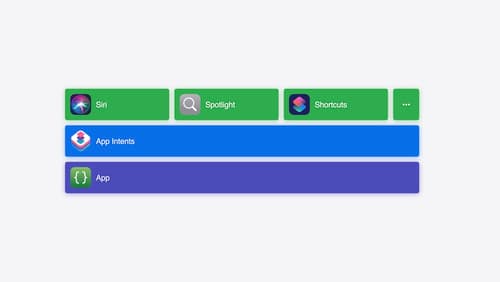List Viewbuilder performance
Asked on 2024-08-04
1 search
List ViewBuilder Performance
The performance of List ViewBuilder in SwiftUI can be enhanced through several techniques and APIs discussed in the sessions from WWDC 2024. Here are some key points:
-
Using
ForEachView:- The
ForEachview can be nested within the ViewBuilder, allowing for flexible composition of static and dynamic content. This is demonstrated in the session Demystify SwiftUI containers where a unified list is created by combining static text views and dynamically generated rows.
- The
-
New
ForEachSubviewAPI:- The new
ForEachSubviewAPI iterates over resolved subviews, making it easier to support any composition of content with less code. This API helps in transforming views efficiently, as shown in Demystify SwiftUI containers.
- The new
-
Group and Section Views:
- Group views and section views help in organizing content efficiently. For example, a list can be divided into sections using the
Sectionview, which supports headers and footers. This is useful for creating organized and readable lists, as discussed in Demystify SwiftUI containers.
- Group views and section views help in organizing content efficiently. For example, a list can be divided into sections using the
-
Custom Views and Modifiers:
- Custom views can be used within lists to create more complex and reusable components. These views can be customized with modifiers to enhance performance and appearance. This is illustrated in the session SwiftUI essentials.
-
State-Driven Views:
- SwiftUI's state-driven nature ensures that the UI is automatically updated when the state changes, reducing the need for manual updates and improving performance. This characteristic is highlighted in SwiftUI essentials.
Relevant Sessions
These sessions provide a comprehensive understanding of how to optimize List ViewBuilder performance in SwiftUI.

Bring your app’s core features to users with App Intents
Learn the principles of the App Intents framework, like intents, entities, and queries, and how you can harness them to expose your app’s most important functionality right where people need it most. Find out how to build deep integration between your app and the many system features built on top of App Intents, including Siri, controls and widgets, Apple Pencil, Shortcuts, the Action button, and more. Get tips on how to build your App Intents integrations efficiently to create the best experiences in every surface while still sharing code and core functionality.

Migrate your TVML app to SwiftUI
SwiftUI helps you build great apps on all Apple platforms and is the preferred toolkit for bringing your content into the living room with tvOS 18. Learn how to use SwiftUI to create familiar layouts and controls from TVMLKit, and get tips and best practices.

SwiftUI essentials
Join us on a tour of SwiftUI, Apple’s declarative user interface framework. Learn essential concepts for building apps in SwiftUI, like views, state variables, and layout. Discover the breadth of APIs for building fully featured experiences and crafting unique custom components. Whether you’re brand new to SwiftUI or an experienced developer, you’ll learn how to take advantage of what SwiftUI has to offer when building great apps.
